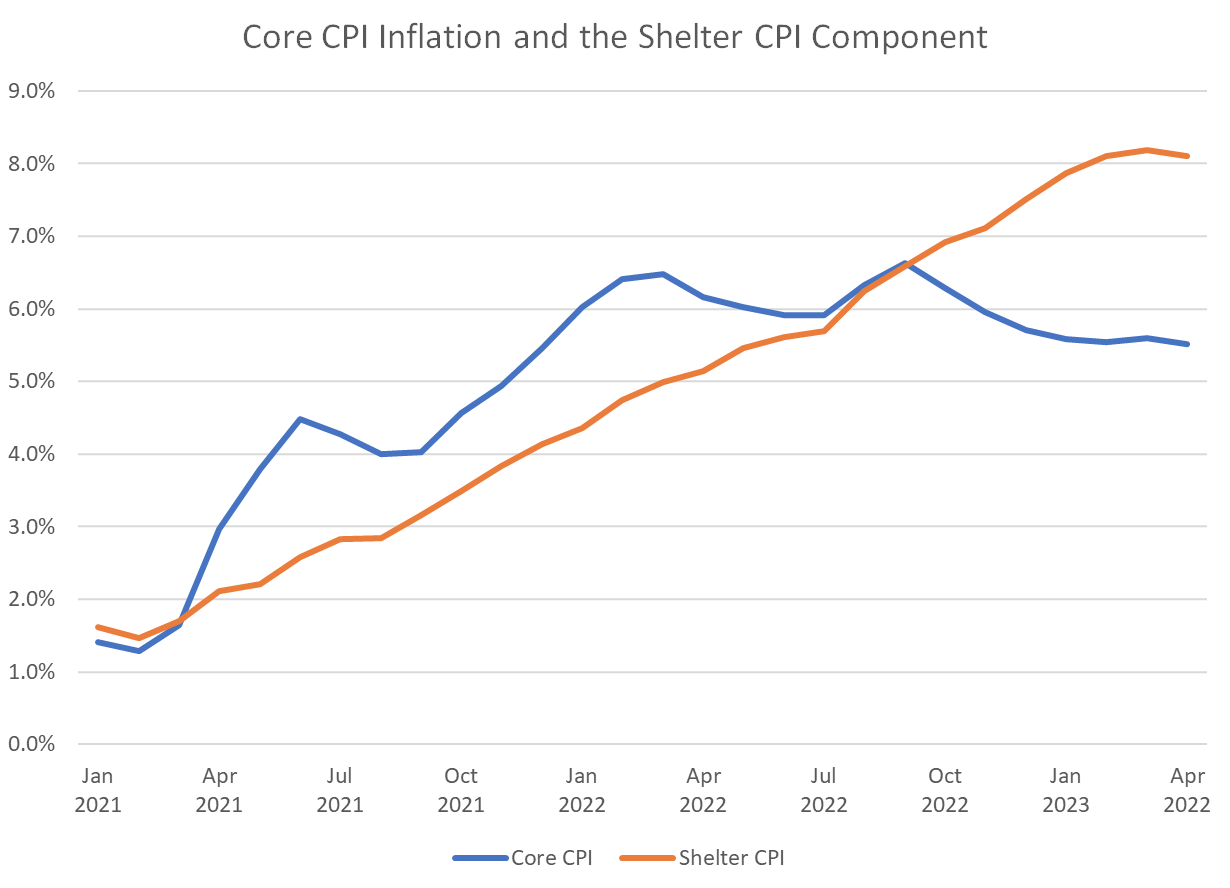The Daily Dish
June 13, 2023
Inflation Data From May
This morning, the Bureau of Labor Statistics will release data on the Consumer Price Index (CPI) for May. Recall that the April report showed some bad news and some good news. On the bad news front, core CPI inflation came in at 5.5 percent year-over-year (blue line, below), little changed from the beginning of 2023. That would suggest little progress in the battle on inflation.
The good news came in the shelter component of the CPI (orange line, below), which for the first time since early 2021, declined on a year-over-year basis. The decline was not dramatic – 8.2 percent to 8.1 percent – but for inflation to return to the 2 percent target, it is essential for shelter inflation to drop as shelter constitutes one-third of the CPI.
For those eager to see the Fed skip a meeting without raising rates, or to pause from raising altogether, this good news could be enough comfort. For inflation hawks, the bad news probably dominates their thinking.
So, what should one be looking for today? Unsurprisingly, the key will be the shelter data. As shown below, the year-over-year data have displayed only a small decline. But viewed on a monthly basis (at an annual rate), the past three readings have been 9.9 percent, 8.2 percent, and 5.5 percent, respectively. Clearly, as new yearly leases enter the computation, they are doing so at much softer rates of inflation. The key question for today is: How much more softening in shelter inflation happened in May?
How will the data affect the Fed’s decision, which will be announced Wednesday? Probably not at all. Fed speakers, notably the Vice-Chairman designate Phil Jefferson, have signaled that there will be no rate increase. The Fed hates to surprise markets, so expect that to be the decision tomorrow. But a report filled with high shelter and other inflation would probably force the Fed to raise at the July meeting.
Fact of the Day
Across all rulemakings this past week, agencies published $7.5 billion in total costs but cut 841,100 annual paperwork burden hours.












